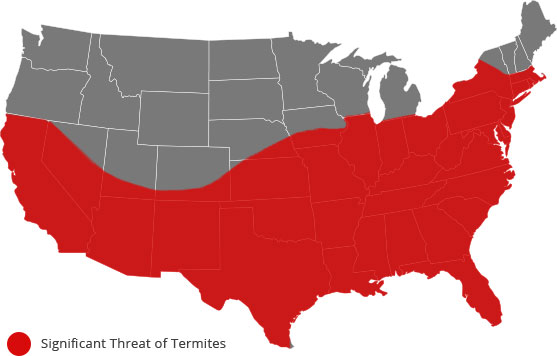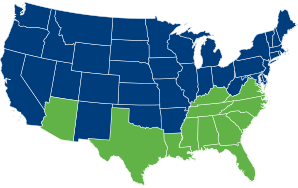FIND YOUR LOCAL
NADER'S SERVICE CENTER
Protect Your Family and Home Today
Subterranean Termites
Every year, termites invade millions of homes causing billions of dollars in damage. Their insatiable nature makes them search for any wood structure or product, including your home’s structure, furniture, insulation and even books. Their damage is so extensive that it surpasses the combined damage done to homes from storms and fires each year. Unfortunately, termite damage is not as visible as things like storm damage, and underground termite threats can go unobserved for long periods of time. This damage can be substantially more costly to homeowners since it’s seldom covered by homeowners insurance.

In the U.S., subterranean termites have been reported in all states but Alaska and are much more prevalent in warmer climates of the South, including Northeast Florida. Communities around Jacksonville continue to expand, and the termite threat grows as we encroach on their natural habitat. By removing their native food source, we leave them with little alternative but to search for another in our homes. They are constantly seeking a food source, and existing colonies can spread rapidly. "Swarmers" are the reproductive termites that can be seen in early spring and summer looking to form a new colony in another location.
Termites need only a tiny gap in concrete, metal or mortar to enter your home—less than 1/32”. They will construct air and moisture tight shelter tubes that lead from the soil to the wood in your home, and during termite detection, these tubes have been found in wires, along pipes and can also extend free of any support. The workers are using these tubes as their "highways", traveling constantly back and forth between the colony in the soil to the food source (your house).
Drywood Termites
Another threat to your northeast Florida home is drywood termite damage. This species of termite doesn't attack from the ground like subterranean termites, although they are capable of causing just as much destruction. Drywood termite colonies are relatively small (around 3,000 termites), are found inside the structures on which they feed and require a specialized termite detection and extermination method.
Oftentimes, in late spring and summer, you may detect mating pairs of drywood termites called “swarmers”. Another way to detect their presence is if you come across frass (fecal matter) that looks similar to coffee grounds and has a gritty texture. Other indications you may have an infestation include damaged wood, swarmer bodies or wings or kick-out holes.
